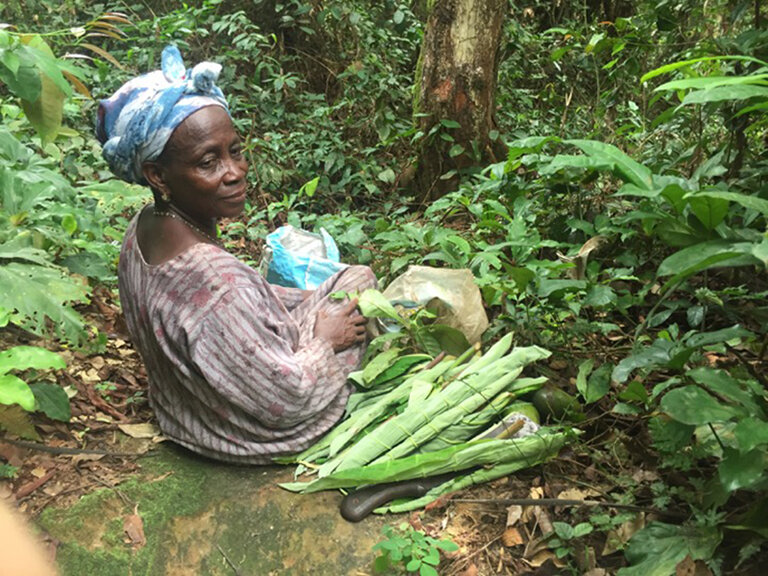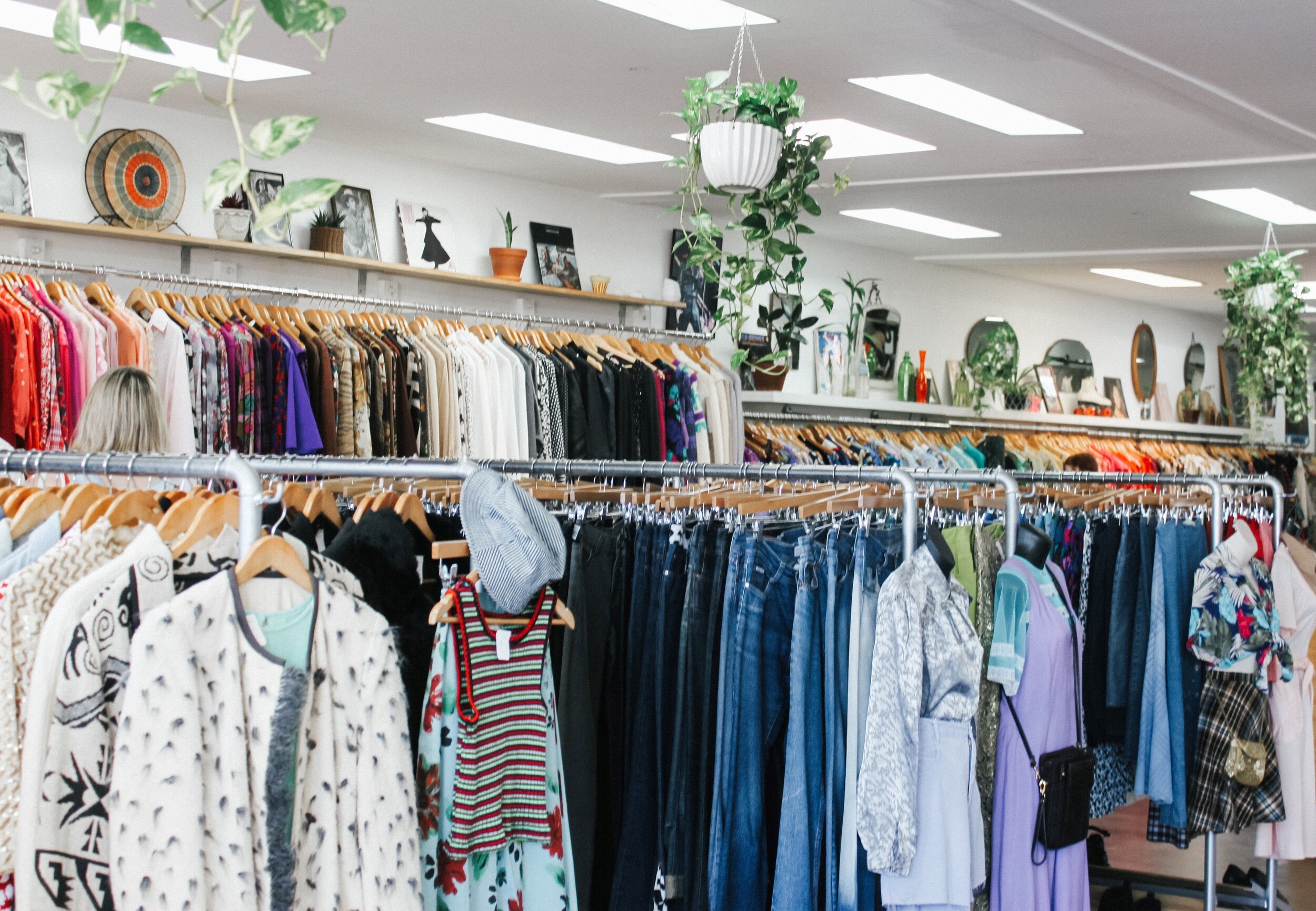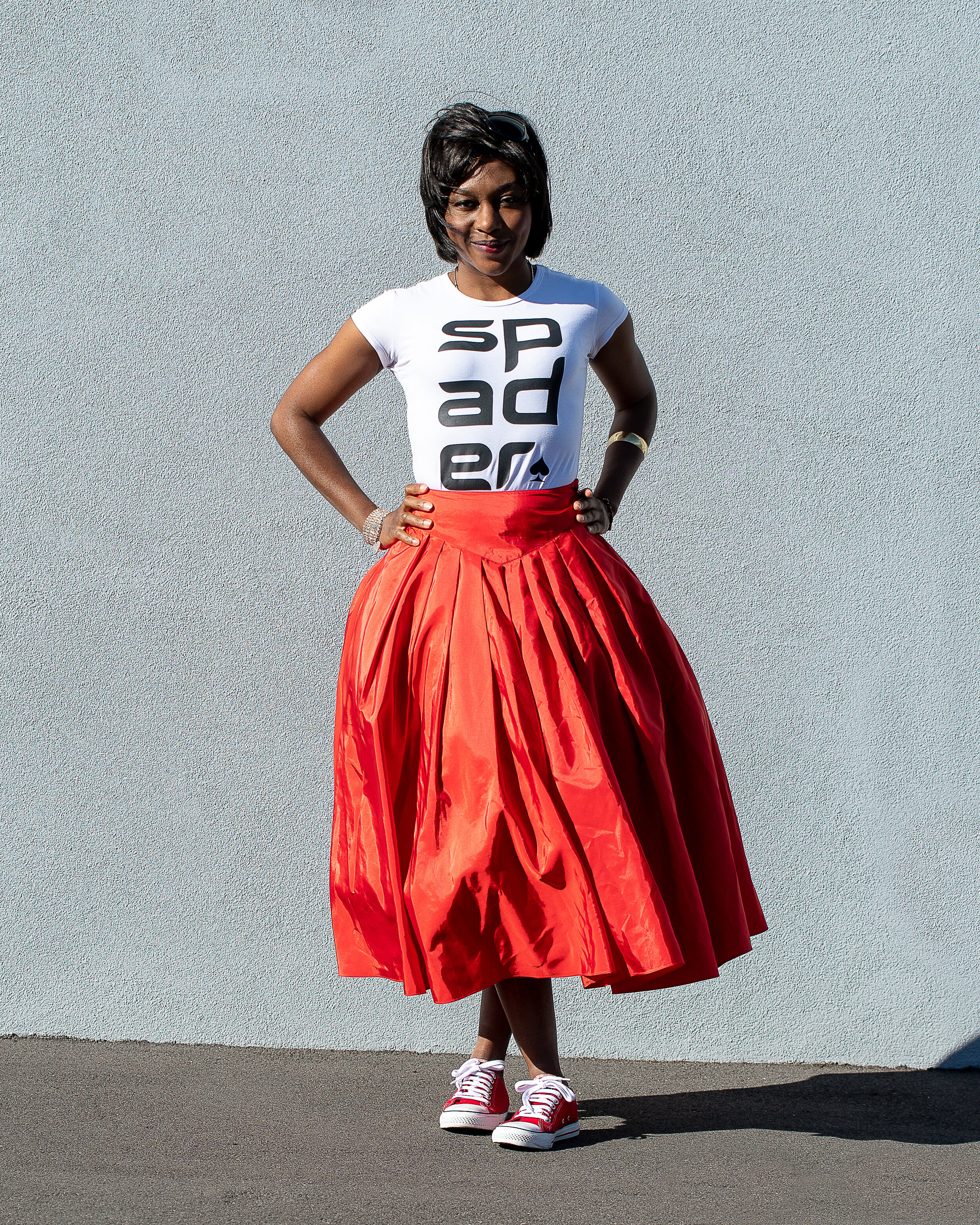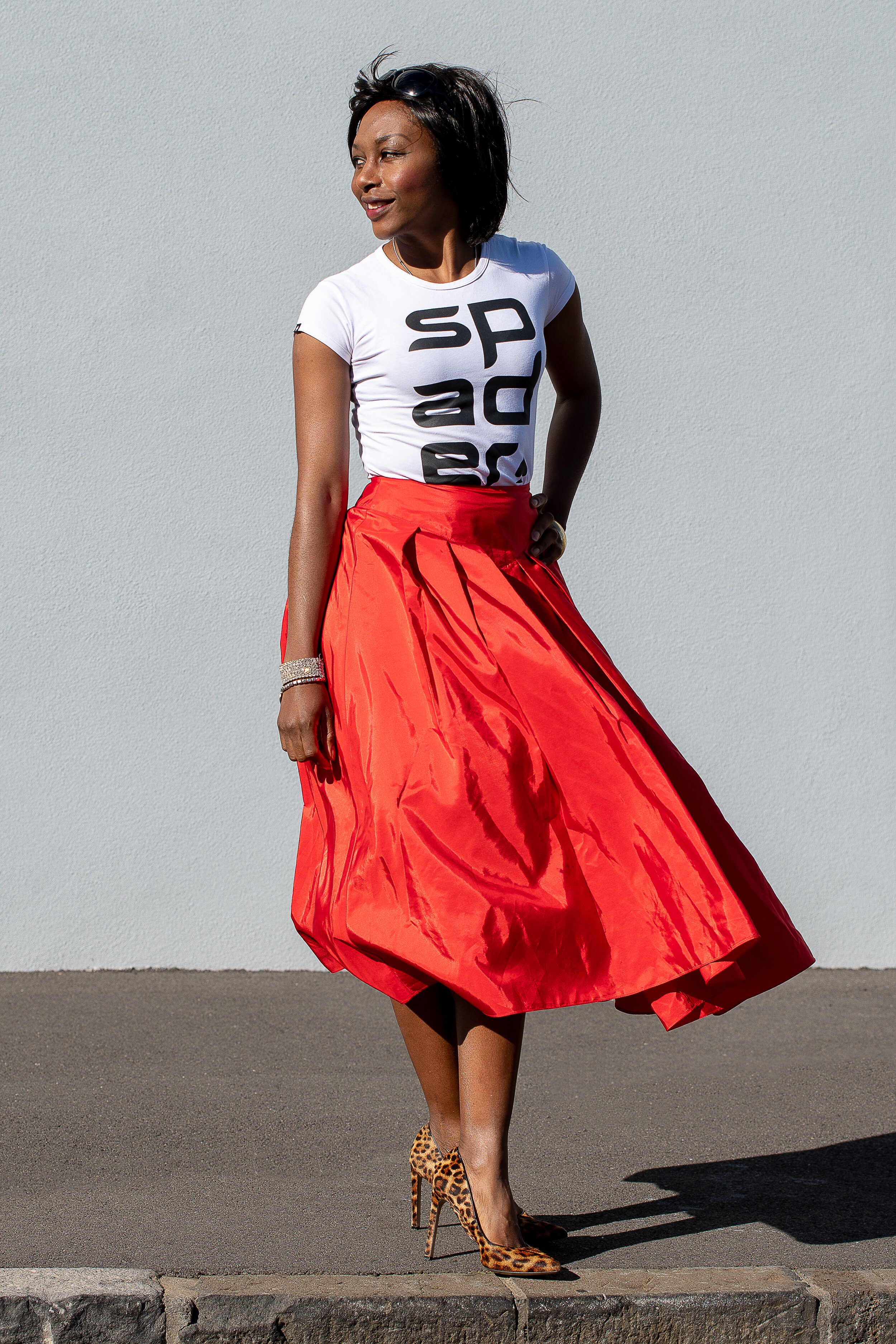Image credit: Information Age
For both palpable and less obvious reasons, women are crucial to the survival and thriving of our species on multiple levels. From past millennia to date, women have been a perpetual force in upholding family units and communities. And a force that contributes significantly to powering economies. In fact, if we’re serious about creating positive change on a global scale, we need to empower many more women. Yet, of the billions of people in the world living below the poverty line, 70% are women. Based on the findings of the Intergovernmental Panel on Climate Change (IPCC), it is evident that people who economically and socially are most vulnerable and marginalised experience the greatest impacts when it comes to climate change. Women fall into this demographic. If we continue to allow this to happen, climatic catastrophes will prove even more fatal for humanity. Therefore, avoiding further climate breakdown by protecting women and the environment is imminent.
Climate change bears its brunt mostly on the bottom 2 billion people on the planet. Even though the poorer half of the world’s population generates just 10% of emissions, the Global South suffers at least 75% of the costs of climate change. Wealthy countries in the Global North by far have always been the biggest emitters of greenhouse gases. According to the Director of Feedback, Carina Millstone, “citizens living in the countries with the lowest per capita consumption of resources consume two tons of materials per person per year for their food and shelter; while those living in countries with the highest per capita consumption use 60 tons of materials per capita per year.”
Women in the Global South are disproportionately impacted more than any other demographic. For instance, UN figures indicate that women make up for 80% of people displaced by climate change. Tasks such as household chores, family care giving, fetching water and gathering energy sources like charcoal and firewood for heating and cooking, and of course agriculture make women more vulnerable when disaster strikes. Disasters such as flooding, droughts, deforestation, coastal storms, extreme and unpredictable weather patterns, soil erosion, etc displace women usually through life or death circumstances.
Image credit: Nandhu Kumar
When it comes to the susceptibility of women in the Global South, social, cultural and economic factors such as differential roles, lack of credit and poor infrastructure are also to blame. Access to decision-making, tech, training and extension services that would enhance their capacity to adapt to climate change are insufficient or non-existent. Moreover, as a result of continuous impacts of inequality, colonialism and racism, women from the Global South and women of colour in some regions experience an even heavier burden when it comes to climate change. And finally, women in the world have less access to agricultural land. The United Nations Department of Economic and Social Affairs (DESA) stated that around two-thirds of the female workforce in the Global South is involved in agricultural work. However, they own less than 10% of the land despite leading the world's food production by 50 - 80%. Before we explore ways of fixing these issues, let’s have a more holistic, in-depth look at some of the specificities around climate disasters that impact women:
Extreme rain and droughts - With rising temperatures, there has been and there will continue to be more floods in some areas and droughts in others. Flooding drowns food crops and droughts dry them up. This leads to food scarcity which is the precursor to other issues such as poverty through livelihoods being destroyed, malnutrition and starvation.
Food scarcity – Girls and women have a greater susceptibility to malnutrition and vector-borne diseases which are made more prevalent by climate change. And they’re more likely than boys to get less food during times of food scarcity. These food shortages cause communities to go to war over shrinking food resources.
Image credit: Guardian.co.uk
Life security – Women face heightened safety risks during times of war, conflict and disasters with issues like domestic violence, sexual assault, human trafficking and other human rights violations. With limited access to information and limited movement outside their homes, women are 14 times more likely than men to die during disasters, according to reports by the African Development Bank.
Lack of socioeconomic power - Women in the Global North are also affected by climate change. With less socioeconomic power, women overall experience more poverty than men. It, therefore, becomes harder for them to recover from disasters that have affected jobs, infrastructure and housing. An example is Hurricane Katrina in New Orleans, Louisiana, USA in 2005. The city had a high level of poverty amongst its African American residents. They were most affected by the hurricane flooding. Scientists predict that as sea levels rise from climate change, low-lying cities like New Orleans are at risk of flooding.
Education – Women are more likely than men to end formal education early in multiple regions. In Africa, female illiteracy rates were over 55% in 2000, compared to 41% for men. This means they are far less likely to get into leadership positions where they can influence climate mitigation policies. On this matter, environmental scientist Diana Liverman said, "Women are often not involved in the decisions made about the responses to climate change, so the money ends up going to the men rather than the women.” Because women are likely to do more work to secure household livelihoods during extreme weather circumstances, they have less time to access training and education, develop skills or earn income.
Image credit: Yogendra Singh
Disaster survival – An Oxfam report stated that in the wake of the 2004 tsunami, the men who survived the disaster outnumbered women by almost 3:1 in Sri Lanka, Indonesia and India. It was reported that women spent more time trying to save their children, which delayed their efforts to escape the tsunami. They were also less likely to know how to swim than men. The 2004 tsunami was not a climate change disaster, however, due to the rise in sea levels from climate change and the loss of coastal ecosystems, tsunamis are expected to intensify. This, however, serves as an example of how expectations on women to provide family care also has uneven effects during times of disaster.
Life expectancy – A study of natural disasters spanning 20 years found that catastrophic events lowered the life expectancy of women more than men. In countries where women had higher socio-economic power, fewer women, in general, were killed and fewer women were killed at a young age.
Water shortage – When climate changes cause water bodies to shrink, it impacts the lives of those who are dependent on it. In Central Africa for example, 90% of Lake Chad in West Africa has encroached. Millions of people across five nations use Lake Chad as their water source. As the lake shrinks, women have to walk much further to get water for their families.
Image credit: UN IHE Delft Institute for Water Education
Internal displacement and refugees – Many women are forced into displacement from their homes or forced to become cross-border refugees as a result of climate change factors such as rising sea levels in West Africa and drying river basins in Southern and Eastern Africa. According to the UN High Commissioner for Refugees (UNHRC), adolescent girls and women are refugees at the highest risk of being trafficked for sexual slavery while in transit to a foreign land and of experiencing gender-based violence while in the refugee camps. Women risk assault at the camps when they venture out of the protected environment in search of water and firewood.
Social vulnerability - Social vulnerability can come from lower wages, financial insecurity and inequality. In East Africa and Pakistan for example, drought and flooding have impacted farming, respectively. Men have a higher chance of relocating for higher wages than women. Women typically are unable to migrate due to family care-taking commitments.
How can we fix the disproportionate impacts from climate change?
The simple answer is to end all activities that perpetuate climate change. As I’ll explain later, indigenous women and communities in the Global South have centuries worth of ecological knowledge on mitigating some aspects of climate damage and implementing environmental restoration. In an equal spirit of partnership and cooperation, perhaps we can combine this traditional, organic and resourceful knowledge with modern technology for broader application to prevent, solve or restore some of the environmental damage. In any case, here are several more suggestions:
1. Imminent zero emission targets
Immediate action is required to protect women made vulnerable by climate change. Emphasis should be placed on protecting people and planet today, not protecting the future. The greatest concern should be for the people that rely on natural resources, the environment and climate every day to survive. Several of the biggest global zero-emission targets by corporations and nations are set to happen by 2050 but vulnerable people do not have 10, 20 or 30 years to wait. Therefore, global zero-emission targets need to accelerate towards present day, not 2030.
We’re currently overshooting the planet’s resources by 60% each year with regards to production and the earth’s ability to absorb and replenish resources that we consume. Our excessive overconsumption is driven by a few rich countries. The 2030 target has a higher chance of succeeding if we start with the 20 biggest greenhouse gas emitter companies in the world, especially with the participation of the US, China and India.
2. Propagate traditional knowledge and wisdom
Despite vulnerability, women should not only be seen as climate change victims. They have proven to be resourceful agents of adaptation and disaster mitigation. Historically, indigenous women and women from the Global South have an organic knowledge of the ecosystem that empowers them to feed their families and uphold communities in the face of disaster and dwindling resources. International geographer, Hindou Ourmarou Ibrahim says Indigenous women have the knowledge of adapting and restoring the forests after a disaster because indigenous people all over the world are very directly dependent on natural resources for food, medicine, education and of course survival. This way of survival has become extremely difficult for indigenous societies in the wake of widespread ecological changes in their environments resulting from climate change.
Indigenous people see themselves as part of the ecosystem with an unparalleled knowledge of the environment developed over centuries where they have depended directly on the forests for dwelling, food, education, medicine, safety, etc. This relationship has advanced their skills in things like preventing and restoring rain rainforests after burning. grandmother in Pacific will know where to get crops after the hurricane to feed her family. In Chad, nomads when they move with cattle, they know how to restore the ecosystem. When it comes to sustainable business practices, the knowledge of indigenous people is a valuable resource and indigenous people are a valuable partner that can protect environment, business.
Image credit: NASA/JPL-Caltech/Sassan Saatchi
3. Representation
Every societal challenge we face will be better addressed if women and girls participate equally in both diagnosing and treating the problems. Women are best placed to devise responses that are effective and advance their own rights.
The UN has emphasised the need for a gender-sensitive approach to climate issues. And the 2015 Paris Agreement has specific provision for the inclusion and empowerment of women. Despite this, there is only a 30% representation of women in the average global and national climate negotiating bodies. A research study by the Proceeding of National Academy of Sciences found that only 20% of the scientists that authored the IPCC report were female identifying. It concluded that “the scientific community benefits from incorporating scientists from all genders, including women from the Global South. Therefore, intersectionality across multiple and diverse barriers such as race, nationality, disciplinary affliction and language are crucial to progress.
Image credit: Marc Cooriolesi
4. Policy and decision-making
Policies must be designed to include outcomes that improve the living conditions of women most affected by climate change. On the matter, Former President Jimmy Carter and Karin D. Ryan said, “… women are far too often excluded from decision making at all levels of environmental policy making.” “We have to think bigger, act quicker, and include everyone.” People in leadership positions need to actively do more to ensure girls and women are in leadership positions under equitable circumstances and with gender-responsive outcomes under the climate movement.
Women of the Global South, being the most impacted must also have full participation in top-level decision-making. The priorities and needs of women must be reflected in planning, development and funding. Fundamental gender issues should be an intrinsic part of policy formation, for instance, equal access to credit resources, training services, tech and education.
Women should also be part of the decision-making process at national and local levels when it comes to resource allocation for climate change initiatives, gender-sensitive investments in projects for mitigation, sustainable development, capacity-building, technology and adaptation.
In Fiji for example, at the community level, groups constituting and lead by women have enhanced the resilience of market vendors against floods, drought and cyclones.
5. Access to education & tech
In 1856, at a time when the work of female scientists were neither acknowledged nor respected, Eunice Foote managed to become the first scientist to lay the foundation of what we know as the greenhouse gas effect, by highlighting the connection between excessive carbon dioxide and increased atmospheric temperatures. The story of Eunice Foote is a symbolic reminder that many intelligent girls and women just need education and opportunities to enable their capability to contribute to creative solutions that will end the crisis. By ignoring the need to educate women and girls in the Global South, we may have lost countless solutions to the crisis that we will never know of. And we will continue to miss out on potential solutions if we do not take action on this matter. This need to invest in education for this demographic is an urgent matter.
Image credit: Girls Not Brides
Clean energy technologies should be devised and implemented in consultation with local women to reduce harmful emissions whilst aiding their economic productivity and security. Provision should be made for rural communities that don’t have electric power to gain access to affordable renewable solar micro grid energy. This is way more cost effective than coal plants. Access to tech and services can help farmers end food insecurity in their communities. In some instances, tech can potentially broaden the application of the indigenous, ecological climate initiatives.
6. Socioeconomic factors
40% of the poorest households in the world are headed by women. The idea that ending climate change has to undermine the living standards and ambitions of the world’s poorest people is a fallacy. As climate change and poverty are interwoven, we should aspire to have practical solutions to both issues simultaneously by refocusing on the living standards of women in the Global South. According to economic anthropologist, Jason Hickel, there's about 700 billion dollars in debt floating around the global South that needs to be cancelled.
Unsustainable sovereign debt restricts many developing countries from providing adequate support in climate crises. These governments are forced to divert funding from social services to maintain debt repayments to their international creditors. Widespread debt cancellation across the South is needed to get rid of unpayable debts that basically chain global South nations to their creditors instead of directing resources towards environmental restoration and disaster mitigation to save lives and livelihoods. Widespread application of this effort will require the influence and cooperation within the IMF, the World Bank, the Paris Club and the G20.
On a different note, initiatives and bodies that fund climate projects should make efforts to work around social, cultural and economic obstacles that prevent women from receiving such opportunities. A good example of gender-sensitive approach to operations and policies is the Green Climate Fund’s gender policy.
7. Economic degrowth, decoupling and redistribution
Currently we’re overshooting our planet’s biocapacity by about 60% each year with regards to the earth’s ability to absorb our waste and replenish resources. Excessive overconsumption and the constant pursuit of material economic growth by nations hoping to increase their Gross Domestic Product (GDP) is mostly responsible for this. This overshoot is of course accelerating environmental degradation, obliterating biodiversity and furthering climate change which is in turn affecting women.
Perhaps we can stop measuring our economic success by GDP because it doesn’t take ecological damage into account. For instance, the loss or damage to biodiversity, land, trees and other resources. Nor does GDP include domestic contributions largely done by women. If it did, perhaps poverty levels for would be reduced and women might be in better financial positions.
What if GDP calculations included environmental preservation factors and levels of poverty eradication as a measure for economic success. An option on this pathway might be to look at models for degrowth and decoupling. Economic anthropologist, Jason Hickel talks about ditching our addiction to GDP growth through absolute decoupling of GDP from material use.
Degrowth means a planned economic shift from ecological overshoot to significant reduction in resource use in the Global North economies. The idea to reduce and maintain global resource use at sustainable levels. This post capitalist model means less focus on material growth. With regards to decoupling, economies that can detach environmental degradation while sustaining economic growth and minimising the amount of resources such as fossil fuels and water are described as decoupled. The focus is on growing the economy without the corresponding environmental pressure. It can also be explained as the "equitable downscaling of production and consumption that increases human well-being and enhances ecological conditions at the local and global level" (Schneider et al., 2010). Models like these would diminish the pillaging of natural resources and hence, the negative environmental domino effect on women.
Another solution could be to evolve past capitalism and eradicate poverty simply by redistributing existing yields of economy from the wealthy nations, institutions, or individuals to the poor. We wouldn’t need to plunder the earth for more resources for economic growth to do this. Yet still, it would bridge the poverty divide and give women a fairer chance at thriving in climate damage circumstances and disasters.
♥ Nina Gbor
References:
https://www.un.org/africarenewal/magazine/august-2016/women-grapple-harsh-weather
https://www.brookings.edu/research/girls-education-in-climate-strategies/
https://www.un.org/en/chronicle/article/womenin-shadow-climate-change
https://www.ohchr.org/EN/Issues/HRAndClimateChange/Pages/GenderResponsiveClimateAction.aspx
https://www.dw.com/en/climate-induced-sea-level-rise-to-worsen-tsunami-impacts/a-45730449
http://thesustainabilityagenda.com/episode-56-interview-dr-jason-hickel-author-divide/
https://www.abc.net.au/news/science/2019-11-26/climate-change-worse-women/11735842
https://www.greenbiz.com/article/why-economic-degrowth-ethical-imperative
https://www.sciencedirect.com/science/article/abs/pii/S0959652610000259





















